
Arduino Esp8266 PostDaten auf Website / Schritt 2 Schaltplan
In Serial Monitor check if ESP module connects to AP. If connection is successful you will also see IP address of ESP8266. Remember this IP address. Connection. Connect ESP8266 GPIO2 pin to 5V relay module IN. Because relay module operats on 5V and ESP8266 operate on 3.3V we will use 2N2222 NPN transistor to shift levels. Grund is common for 5v.
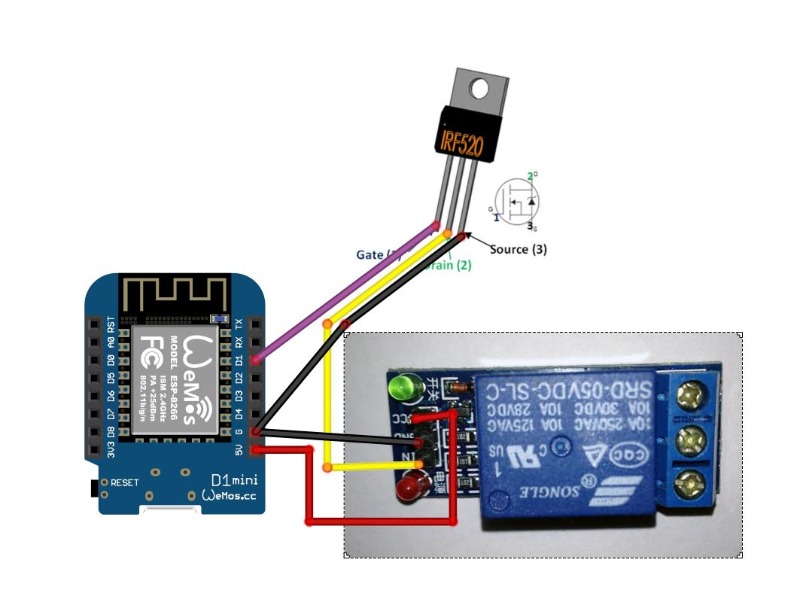
liberté Lait innovation esp8266 relais schaltplan écouteur renflement Frugal
noiasca May 25, 2021, 10:47am 2 mindestens diese Punkte fehlen: mach einen groben Schaltplan auf Papier, fotografieren, hier hochladen. Echtbilder vom Aufbau machen, hier hochladen, damit wir überprüfen können ob deine theoretische Verkabelung in Echt stimmt.
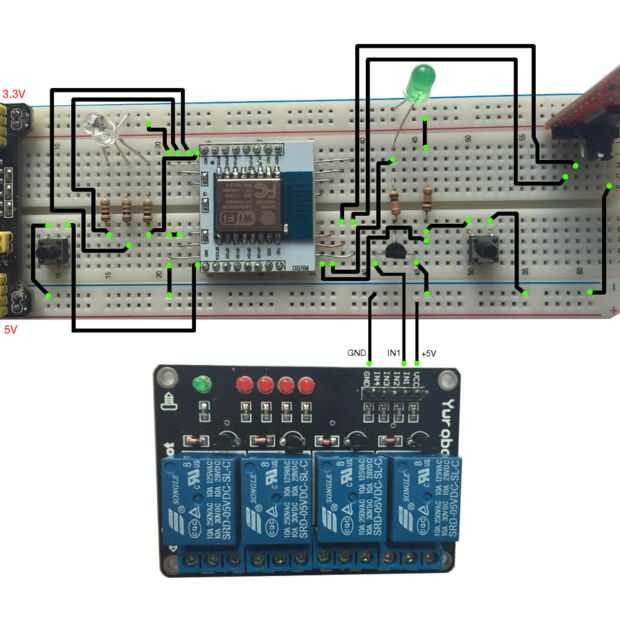
ESP8266 et relais de contrôle à l’aide de Smartphone / Etape 5 Relier tous les éléments
Control Relay with ESP8266 01 Module This project shows how to control a relay with ESP8266. Intermediate Protip 30 minutes 11,071 Things used in this project Story Ideation There are many such videos out there on YouTube, but most of the people have used Relay modules instead of only a relay. Do you know the reason why?
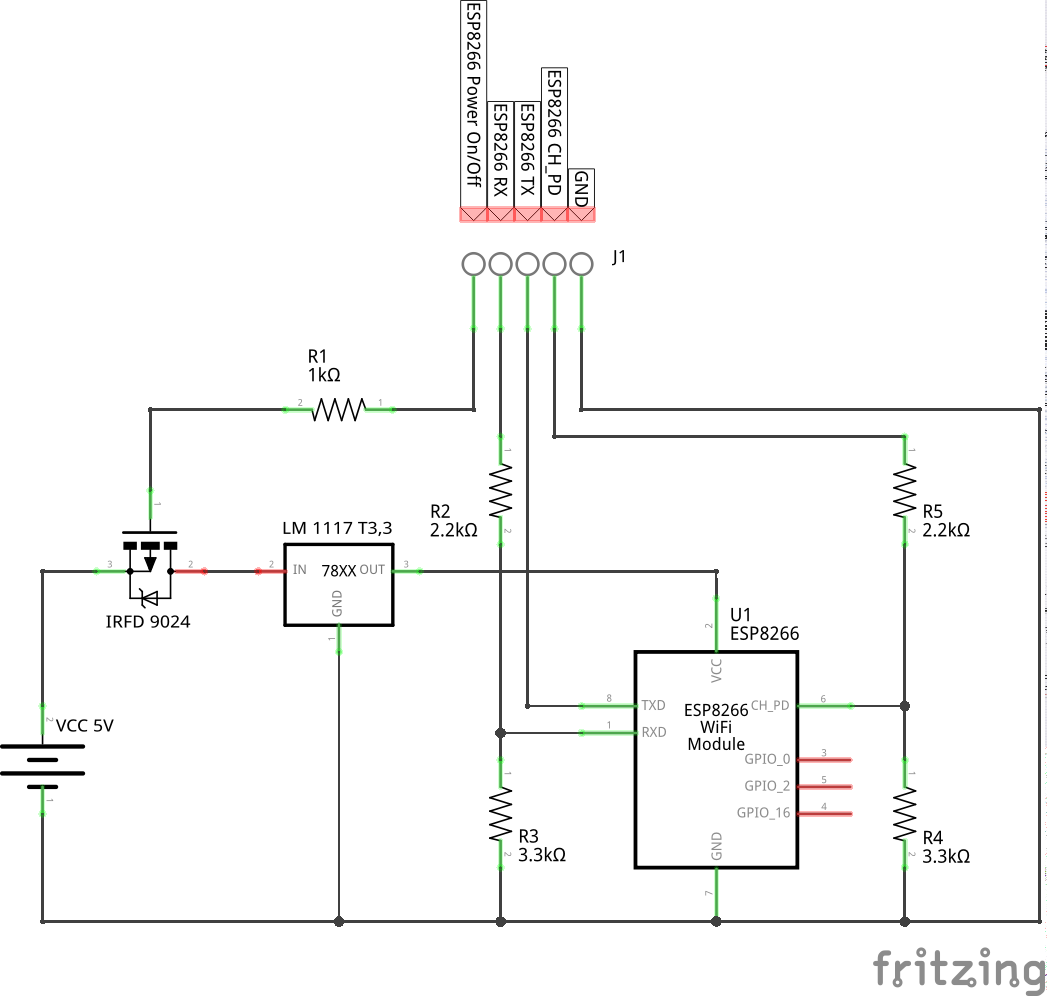
liberté Lait innovation esp8266 relais schaltplan écouteur renflement Frugal
Step 1: Materials ESP8266 WiFi module Arduino Pro Mini 8Mhz, 3.3V 5V Relay module NPN transistor 2N2222 resistor 5K1 AMS1117 3.3V regulator 1000uF capacitor EasyIoT server ( Raspberry Pi or Windows machine) WiFi network (WiFi router) Buying guide for materials: http://iot-playground.com/blog/2-uncategorised/16-esp8266-wifi-relay-switch
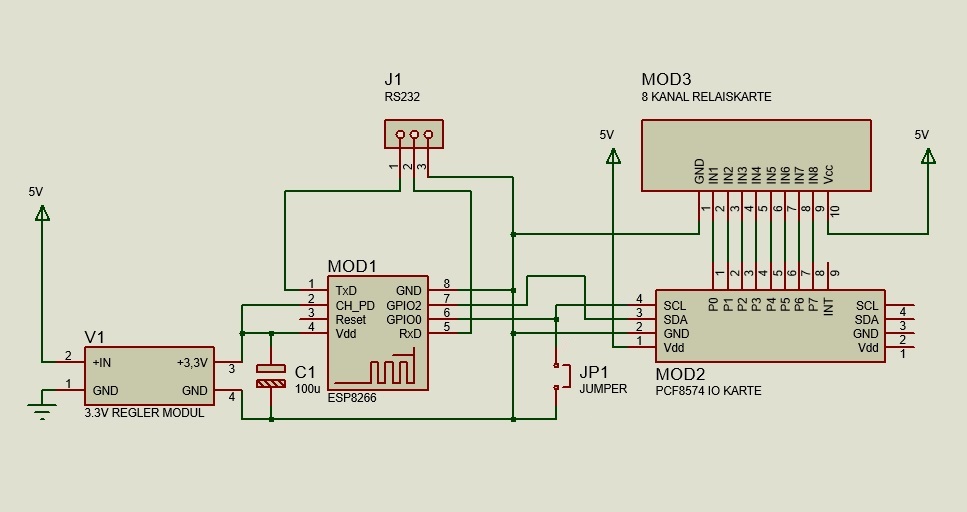
8 Kanal I2C Relais per WLAN ( WiFi ) steuern mit ESP8266 Webserver über Netzwerk
The ESP8266 can be controlled from your local Wi-Fi network or from the internet (after port forwarding). The ESP-01 module has GPIO pins that can be programmed to turn an LED or a relay ON/OFF through the internet. The module can be programmed using an Arduino/USB-to-TTL converter through the serial pins (RX, TX).

ESP32/ESP8266 Relay Module Web Server using Arduino IDE Random Nerd Tutorials
The most intelligent device. We developed Shelly 1 with an integrated WEB interface for device management and a secure OTA update. You can set your weekly schedules for On/Off without the need of any additional equipment. Shelly 1 knows your location, gives you high security and provides device access control.

Tuto Esp8266 Relais
The circuit above have an AMS1117 IC and two capacitors. handles for receiving the input voltage of +5V and regulating it to a voltage level of +3V3. The figure 7 shows the IC on the printed circuit board. Figure 7 - +3V3 Voltage Regulator Integrated Circuit. Now, we will introduce the ESP8266 CHIP circuit block.
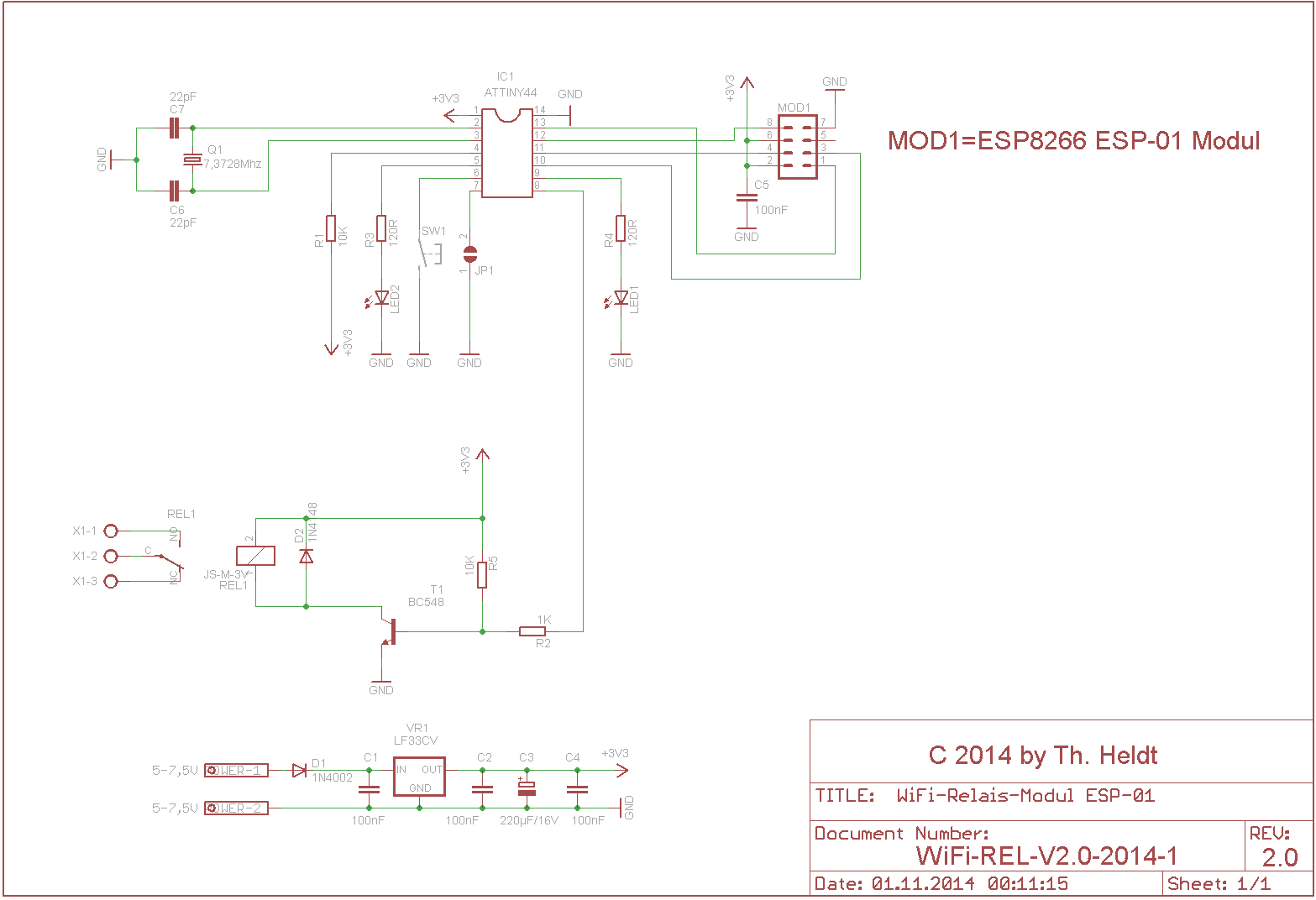
WiFi Relais mit ESP8266 ESP01 Modul
Description This WiFi relay based on AI-Thinker ESP-01/ 01S WiFi module, we use the GPIO0 of ESP-01/ 01S to control the relay by low level. It's easy to DIY your smart switch to any device by your phone anywhere with this smart relay. Specifications Working voltage: DC 5V-12V Working current: ≥250mA Communication: ESP01 or ESP 01S

MicroPython Relay Module with ESP32/ESP8266 (Guide + Web Server) Random Nerd Tutorials
Project Schematic Diagram The circuit diagram for the project "Control a Relay using ESP8266" is shown in the image below. You can see that I've used a single channel relay module in the circuit diagram. Components Required ESP8266 Arduino UNO Resistors (1KΩ and 2.2KΩ) - both are ¼ Watt Resistors Jumper Wires Relay Module Small 5V Bulb Push Button
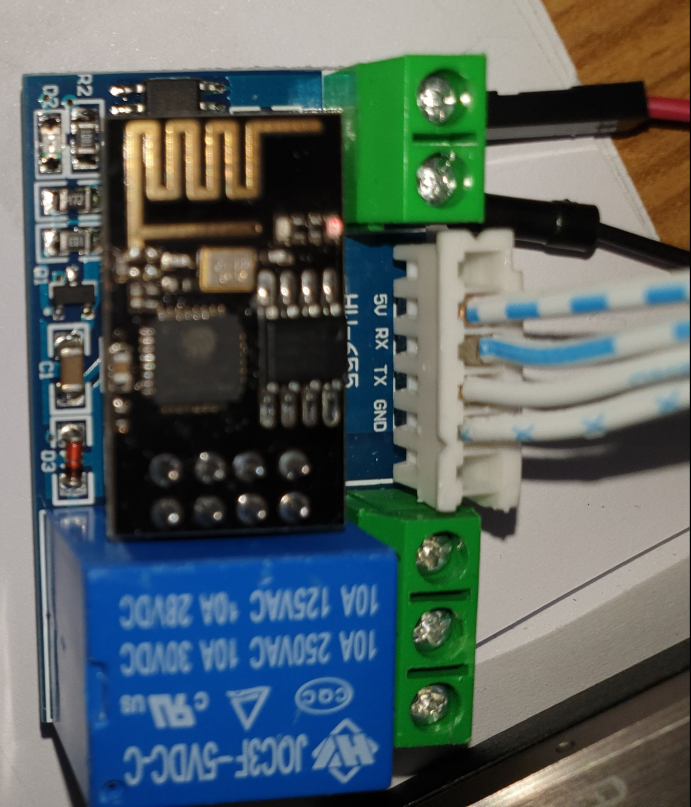
ESP826601 mit Relais AT Firmware und eigene NCX Maker Blog
Mit dem Relais können wir über unseren Steuerstromkreis am ESP8266 einen weiteren Stromkreis schalten. Wie immer im ersten Schritt die Liste der verwendeten Materialien: AZDelivery NodeMCU Lolin V3 Module ESP8266 ESP-12F WiFi WiFi Development Board mit CH340 kompatibel mit Arduino inklusive E-Book! Preis: 7,99 €

Relais beschalten
I wanted to build a fairly simple project that combined a number of elements to further my skills. Mainly it was about creating a project to further develop my code writing skills for the ESP8266 in C code. Essentially, it is an 8-channel relay controller with a wifi interface and an auxiliary RS-232 port for connection to industrial equipment over serial. The PCBs are designed as a dual layer.
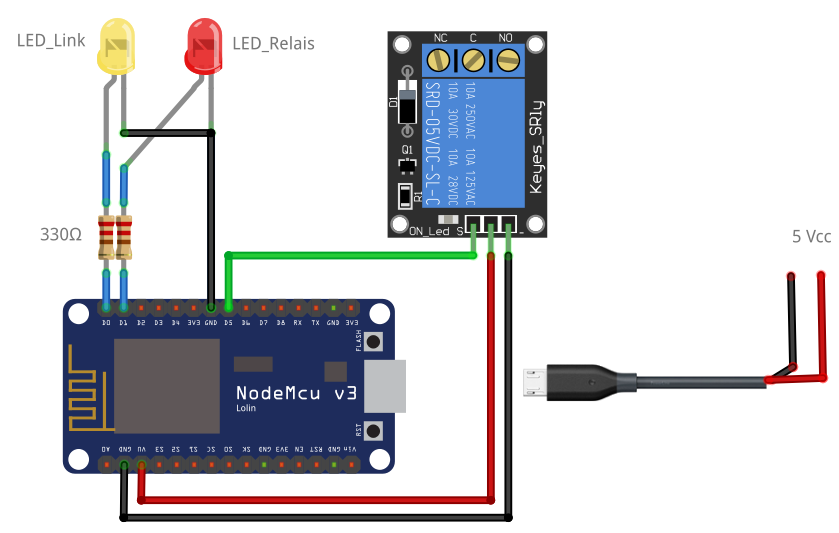
FichierESP8266 RelaisSchema.PNG — GCE Electronics
Using a relay with the ESP8266 is a great way to control AC household appliances remotely. This tutorial explains how to control a relay module with the ESP8266 NodeMCU. We'll take a look at how a relay module works, how to connect the relay to the ESP8266 and build a web server to control a relay remotely (or as many relays as you want).
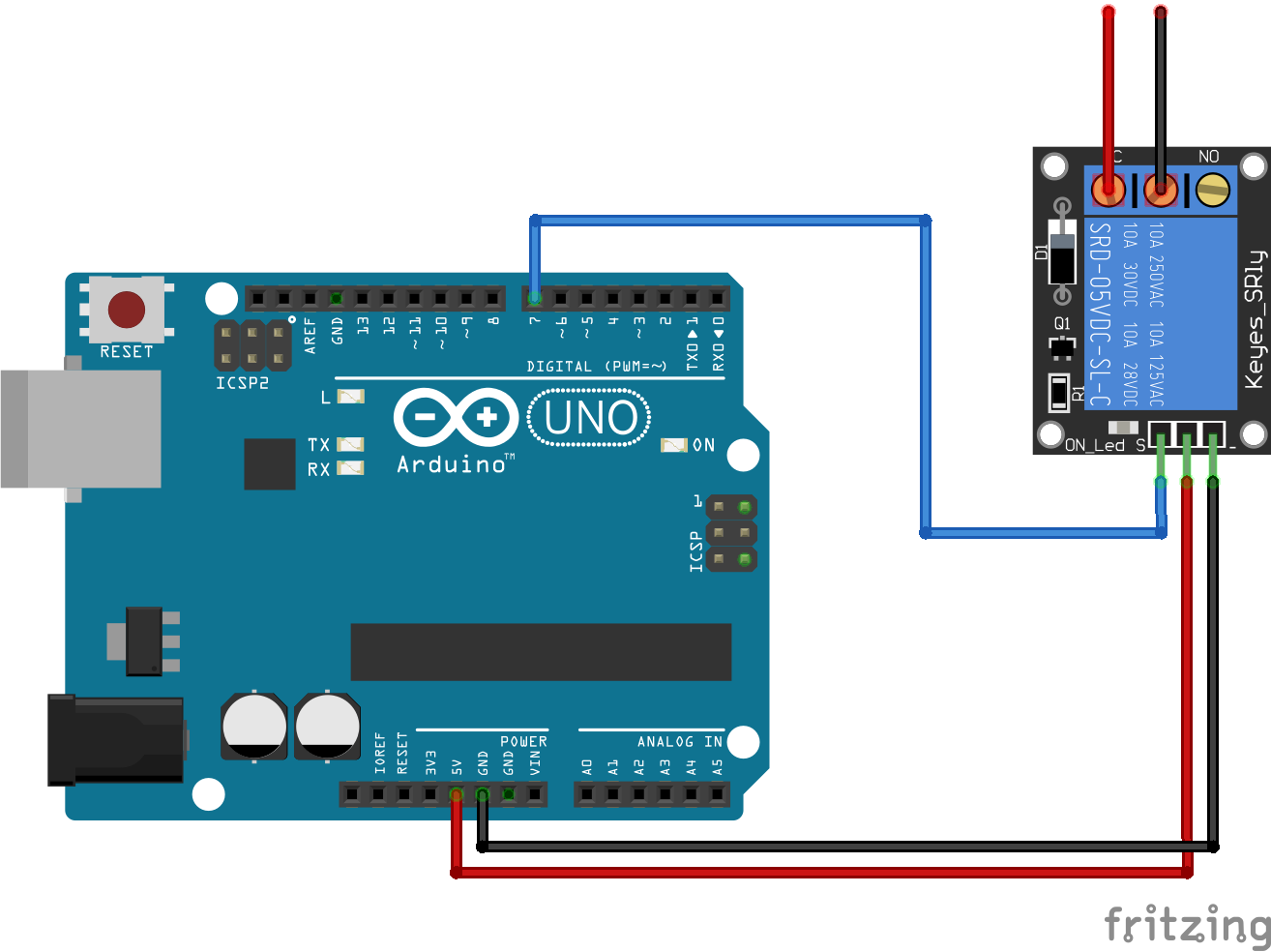
Relay Tutorial for Arduino, ESP8266 and ESP32
When we use an ESP8266 or ESP32 microcontroller with an operation voltage of 3.3V, we have to use the VIN or 5V output from the USB connection as power supply for the relay module and power the ESP8266 or ESP32 board via USB. The following picture shows the wiring between the most used Arduino, ESP8266 and ESP32 microcontroller and a relay module.
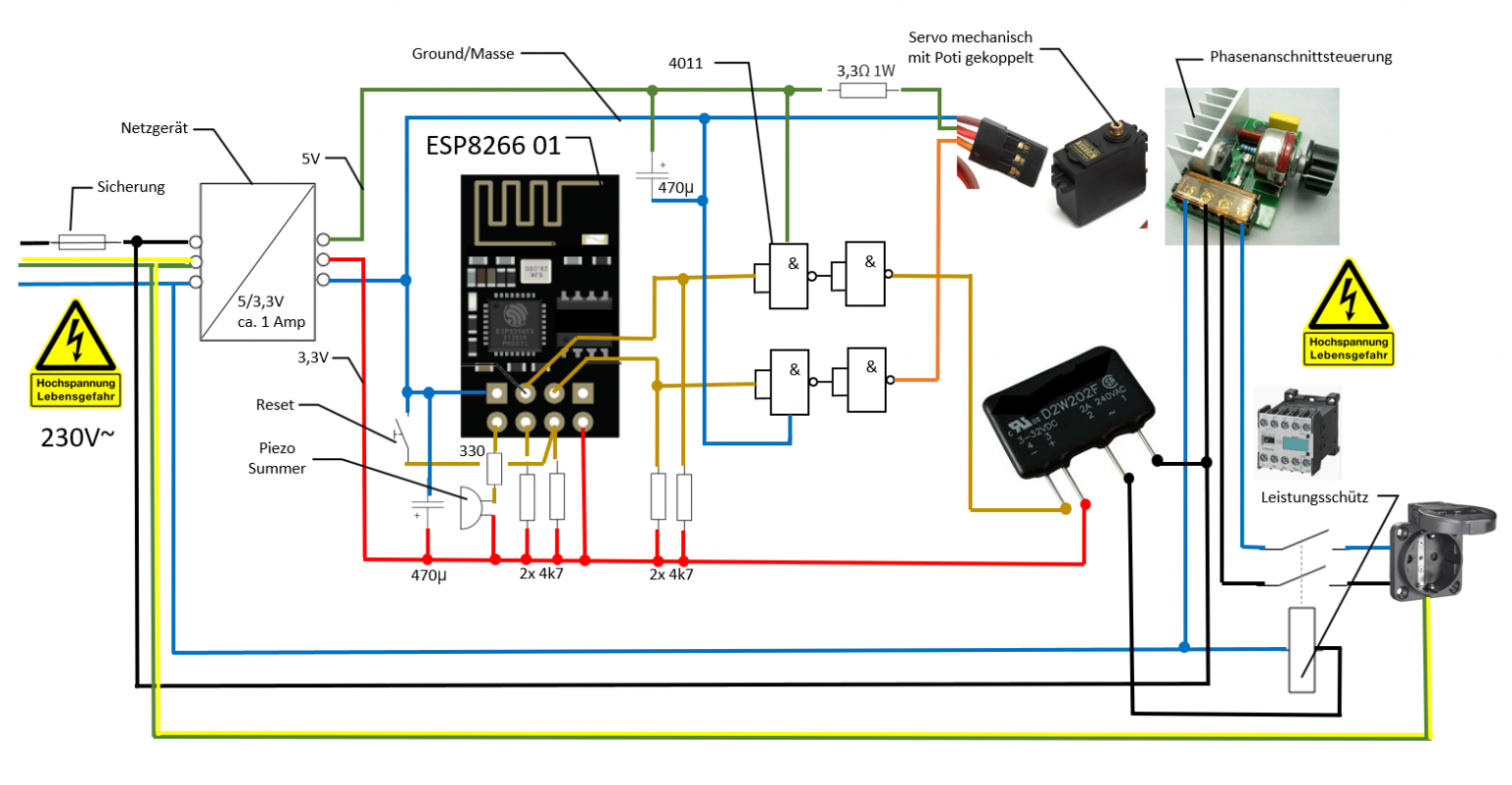
PumpControl mit ESP8266 01 91301 Kersbach
AZDelivery 3 x D1 Mini NodeMcu mit ESP8266-12F WLAN Module CH340G Lua kompatibel mit Arduino inklusive E-Book! 13,99 EUR. Bei Amazon kaufen. Micro USB Kabel, 4Pack [0.5M 1M 2M 3M] Nylon Micro USB Ladekabel Schnellladekabel High Speed Handy Datenkabel für Samsung Galaxy S7/ S6/ J7/ Note 5,Xiaomi,Huawei, Wiko,Motorola,Nokia,Kindle. 9,99 EUR. Bei.

Esp8266 Relais Schaltplan Marlene Wilson Schaltplan
The objective of this post is to explain how to use the ESP8266 to control a relay. Since we are going to control the relay with a digital pin of the ESP8266, we need to use a device that can operate with 3.3V. Fortunately, eBay offers a wide variety of relays suitable to be controlled by a microcontroller, as can be seen here.
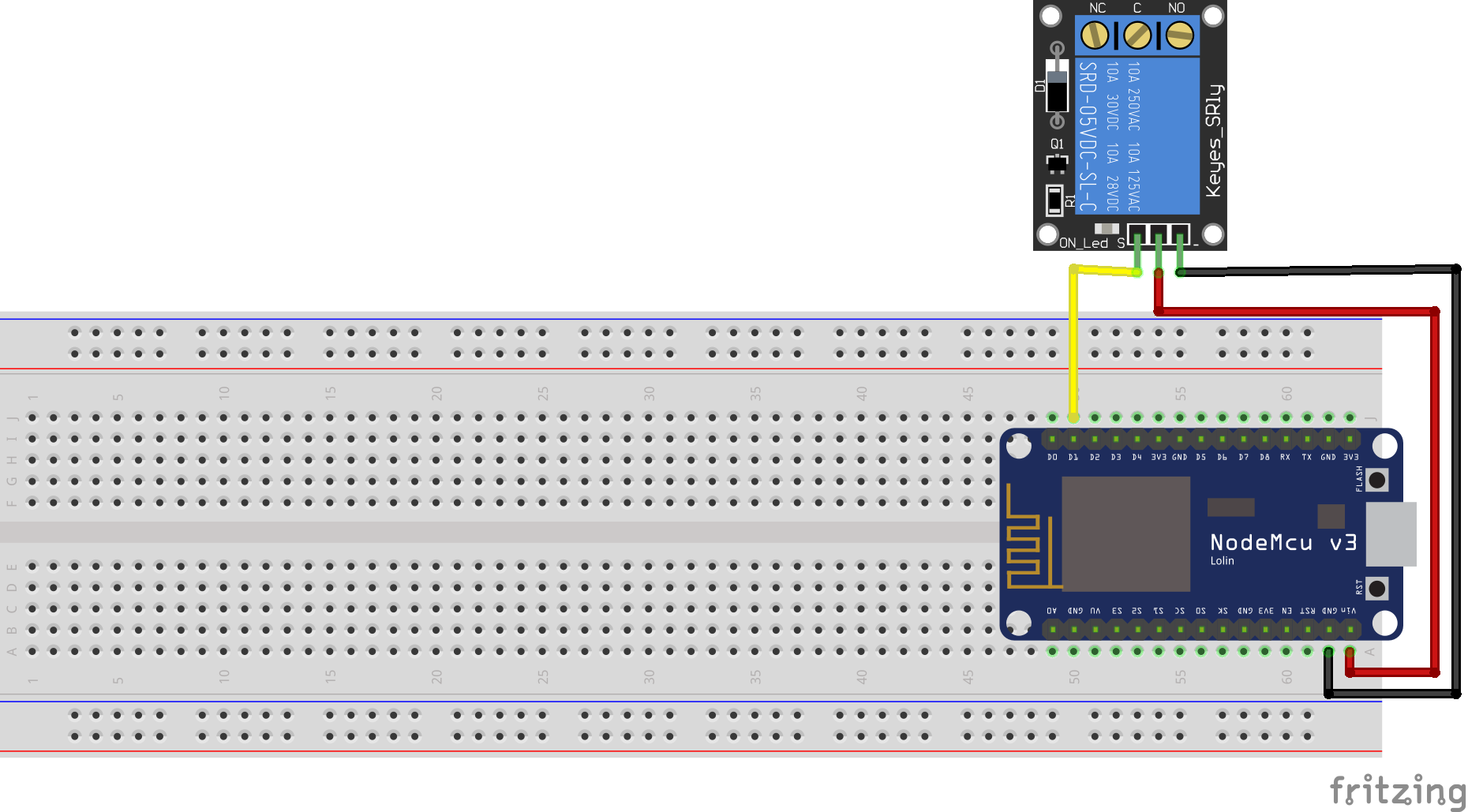
Relais schalten smarthometricks.de
Twenty-five percent of the fund is distributed to the Nevada Housing Division to assist low-income households implement energy conservation, energy eficiency and weatherization programs. This fee for electric customers is $0.00039 per kilowatt hours used and $0.0033 per therm of natural gas used.